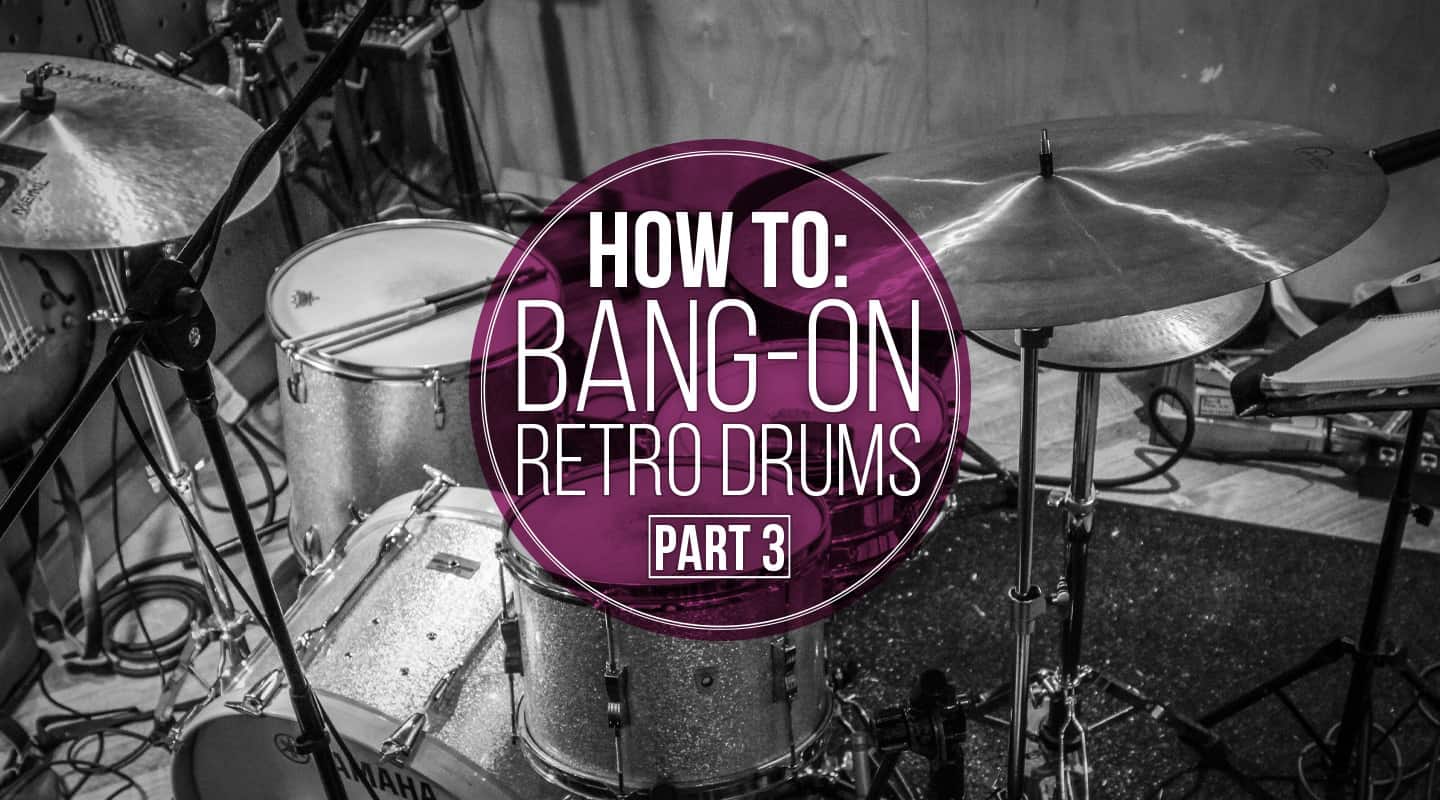
How to: Bang-on Retro Drums Part 3
Tired of drums sounding big, wide and boring. Turn back the clock with us as we re-create drum sounds from the ’50s, ’60s and ’70s.
Mid ’60s to Early ’70s it’s all About Coverage
Tutorial: Michael Carpenter
As pop music was taking over the world in the mid ’60s, there were also massive changes in recording technology. For one, by the end of the decade, stereo pipped mono for pop’s preferred format. As pop records and productions grew in creativity, so did the compulsion to innovate.
Producers started to use the extra room on four-track machines for more content. As they discovered reduction mixes (bouncing down a mix of four tracks to another four-track machine to free up more tracks for overdubbing) there became more demand for a clearer focus on the drums. Also, vocalists didn’t necessarily track live with the ensemble anymore, which reduced or almost completely eradicated the ambience and spill which had been such a big part of a record’s sound up to that point.
Combined with slightly more detailed EQ on consoles, more input channels and routing options, different compressor choices (the earliest 1176 incarnations arrived around this point, as well as The Beatles’ heavy use of Fairchild compression), and advances in tape formulations and machines, records just started to sound better. They became much more tonally focused, with a greater sense of the close mics rather than the ambience of single-track ensemble recording. Later, eight-track recording unshackled the engineers, often resulting in a whole tape track set aside for drums!
Engineers still shied away from moving the mics as close as we do today — there were all sorts of concerns about overloading mics and consoles by getting too close to the drums. But they did start adding additional mics. Initially it was to represent the kit more faithfully, but became more creative as the decade rolled on. For example, engineers started to put mics somewhere in the vicinity of the toms. Often underneath the rack tom, and another somewhere vaguely over the floor tom. If they felt they weren’t getting the presence of the snare, they’d put a mic underneath the snare and add treble to increase the snap of the drum as it headed into its submix, before compression and prior to hitting tape.



MID ’60s TO EARLY ’70s IT’S ALL ABOUT COVERAGE
Key listening tracks:
Respect – Aretha Franklin
Honky Tonk Women – The Rolling Stones
Hello Goodbye – The Beatles
California Dreaming – The Mamas & the Papas

Engineers blatantly broke the previous generation’s rules of miking up, and just put mics in key places, leading to plenty of experimentation with positioning. Remember, there was possibly a condenser on the overhead and snare bottom, but in every other position a standard dynamic mic was typically used.
As things developed, there were inevitably questions about drum setups and parts. Engineers were always looking for ways to get the maximum sound with the smallest amount of mics, which meant positioning became critical. Engineers experimented with pointing mics at the fulcrum of the kit between the snare and the kick drum, or at the side of the snare underneath the hi-hat, or indeed, a single mic on the floor pointing vaguely at the kick drum and bottom of the snare, often requiring the rack tom and all cymbals be removed.
Drummers were starting to control their drums a lot more — taking the front head off the bass drum and putting a pillow or blanket against the single head for a more focused sound. Placing a wallet or something heavy on the snare to reduce the ringing of the drum. In the latter part of the ’60s they even muffled the drums with tea towels or rags to totally control the sound.
In this vital and influential era, it was all about experimenting with both the drums and the techniques used to capture them. Yet undeniably, focus was in, and ambience was most definitely out.
















RESPONSES